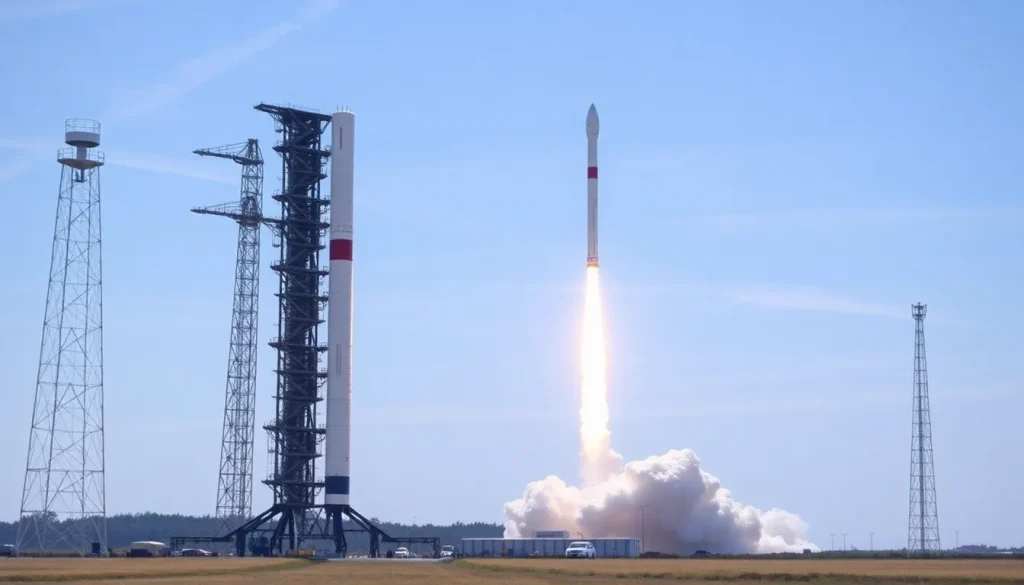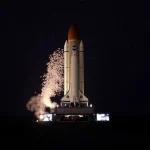Europe's reusable rocket program gains momentum after slow start

In recent years, the landscape of space exploration has rapidly evolved, with reusable rockets becoming a key focus. While the European Space Agency (ESA) has been somewhat slow in adopting this technology compared to industry leaders like SpaceX, there are now promising signs of progress in Europe’s reusable rocket program that could reshape its future in space travel.
This transformative moment was underscored this week when the ArianeGroup, a French aerospace company, announced significant advancements in the development of its Themis vehicle. The Themis prototype, designed to explore various landing technologies, has now been integrated into a launch pad located in Sweden. This integration paves the way for upcoming low-altitude hop tests aimed at developing a rocket capable of vertical landing after reaching orbit.
- Significant milestones in Europe's rocket development
- The context of reusable rocket technology
- Shifting priorities in European space exploration
- The role of collaboration in advancing technology
- Future prospects for Europe's reusable rocket program
- Inspiration from global competitors
- Concluding thoughts on Europe’s journey
Significant milestones in Europe's rocket development
The completion of the Themis vehicle's integration marks a crucial milestone for the ESA and its contractors, indicating that Europe is finally catching up in the reusable rocket sector. This is especially relevant given the escalating competition within the global aerospace industry.
ArianeGroup has expressed the importance of this achievement, stating that it signifies the initiation of "combined tests." These tests will assess the interaction between Themis and the launch pad's systems, including mechanical, electrical, and fluid interfaces. The ultimate goal is to conduct a test under cryogenic conditions, simulating the extreme temperatures experienced during rocket launches.
The context of reusable rocket technology
Reusable rocket technology has revolutionized space travel, significantly reducing costs and increasing accessibility to orbit. This shift began gaining traction over the past decade, notably with SpaceX's groundbreaking achievements. In December 2015, SpaceX successfully landed its Falcon 9 rocket after an orbital launch, demonstrating the viability of reusability in space missions.
Moreover, Blue Origin, led by Jeff Bezos, made headlines with its successful landing of the New Shepard vehicle shortly before SpaceX's success. These milestones sent shockwaves through the aerospace community, prompting a reevaluation of traditional rocket designs.
However, during this time, the ESA remained committed to developing the Ariane 6, a medium-lift rocket with a conventional design that did not embrace the reusability trend. The focus on Ariane 6 meant that funding and resources were primarily allocated to this project, sidelining the exploration of reusable technologies.
Shifting priorities in European space exploration
By mid-2017, the ESA recognized the need to adapt to the changing dynamics of the space industry. The agency began initiating programs aimed at developing reusable launch vehicles to ensure that Europe would not fall further behind in the race for space innovation.
Key programs and initiatives included:
- The initiation of studies focused on reusable technologies.
- The exploration of partnerships with private companies to leverage expertise in reusable systems.
- The development of test vehicles that could validate new landing technologies.
These efforts signaled a renewed commitment to reusability, showcasing a strategic pivot in European space policy. The advancements in Themis not only illustrate the ESA's determination to stay competitive but also highlight the collaborative spirit within Europe’s aerospace community.
The role of collaboration in advancing technology
The development of reusable rockets is inherently complex and requires extensive collaboration among various stakeholders, including government agencies, private companies, and research institutions. In Europe, this collaborative approach has gained momentum, with many organizations pooling their resources and expertise.
For instance, the ESA has been actively engaging with the European aerospace sector to foster innovation through partnerships. This collaborative effort has enabled the sharing of knowledge and best practices, allowing for faster advancements in rocket technology.
Examples of collaboration include:
- Joint research projects focused on propulsion systems.
- Shared testing facilities for validating new technologies.
- Cross-border initiatives aimed at standardizing components and systems.
Such partnerships not only enhance technological capabilities but also contribute to building a robust ecosystem that supports the growth of the European space industry.
Future prospects for Europe's reusable rocket program
As Europe continues to embrace innovation in rocket technology, the future looks promising for the ESA and its contractors. The Themis project is poised to serve as a foundation for further developments in reusable rocket systems, potentially leading to significant advancements in both commercial and scientific space missions.
Looking ahead, several factors could influence the trajectory of Europe’s reusable rocket program:
- The success of upcoming tests with Themis, which will validate landing technologies.
- The ongoing competition with private companies, particularly those in the United States.
- The increased demand for satellite launches and other space missions.
The lessons learned from Themis and subsequent projects could inform the development of future rockets, potentially leading to a new generation of vehicles that can efficiently transport payloads to orbit and beyond.
Inspiration from global competitors
Europe’s renewed focus on reusable rockets has not only been a reaction to internal needs but also a response to the impressive feats accomplished by its global competitors. The success stories of SpaceX and Blue Origin have served as both inspiration and a benchmark for Europe’s space ambitions.
In particular, the advancements made by SpaceX in developing the Starship, a fully reusable spacecraft, have set new standards in the industry. The efficiency and cost-effectiveness of these technologies challenge traditional approaches and highlight the urgency for Europe to innovate.
To further understand these advancements, you can watch this insightful video that delves into Europe's next big rocket developments:
Concluding thoughts on Europe’s journey
The journey towards developing a robust reusable rocket program is fraught with challenges, but the recent strides made by the ESA and ArianeGroup indicate a commitment to innovation and competitiveness in the aerospace sector. With collaborative efforts and a focus on technological advancements, Europe is positioning itself to make significant contributions to the future of space exploration.
As the ESA prepares for the upcoming tests with Themis, the entire industry will be watching closely, eager to see if this marks the beginning of a new era for Europe’s space ambitions.




Leave a Reply